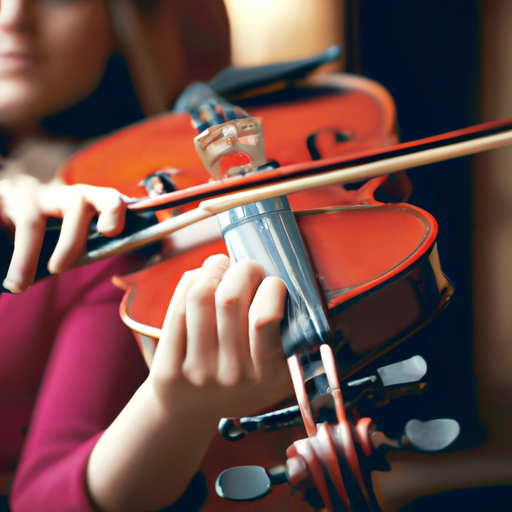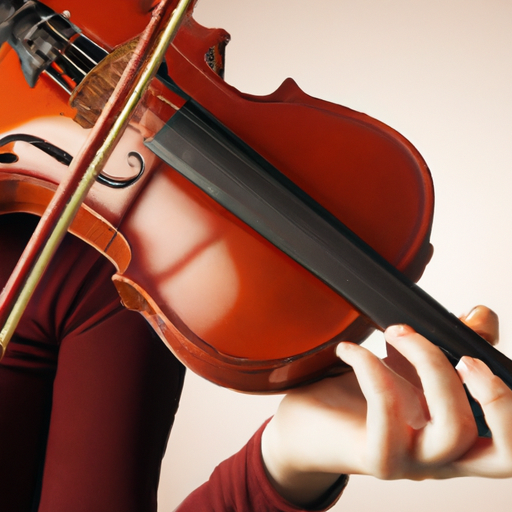
Are you interested in learning how to play the violin? Whether you have always been captivated by the beautiful sound of this instrument or are simply looking for a new hobby, violin lessons for newcomers can be a rewarding and enriching experience. In this article, we will provide you with a comprehensive guide to getting started with the violin, from understanding the instrument to developing your own personal style. By the end, you will have all the tools and knowledge you need to embark on your musical journey.

Before you start learning how to play the violin, it is important to familiarize yourself with the instrument itself. The violin consists of several key components, each with its own unique function. The body of the violin, known as the soundbox, is typically made of wood and is responsible for producing the instrument's resonant sound. The neck of the violin holds the fingerboard, where the player's fingers press down on the strings to produce different notes. The strings are stretched over the bridge, which transmits the vibrations from the strings to the soundbox. Finally, the bow is used to create sound by drawing across the strings.

There are also different types of violins available, each with its own characteristics and sound. The most common types include the classical violin, the electric violin, and the acoustic violin. The classical violin is the traditional version of the instrument and is often used in classical music. The electric violin, on the other hand, uses electronic pickups to amplify the sound and is popular in contemporary music genres. The acoustic violin falls somewhere in between, offering a balance between the classical and electric versions.
When choosing a violin, it is important to select one that suits your preferences and playing style. Consider factors such as the sound quality, comfort, and durability of the instrument. If you are a beginner, it may be advisable to start with a rental violin or a more affordable option until you become more experienced.
Learning the violin can be a challenging task, but with the guidance of a skilled teacher, you can make significant progress. When choosing a violin teacher, there are several qualities to look for:
When selecting a teacher, it is also important to ask the right questions. Some questions you may want to consider include:
By asking these questions, you can ensure that you find a teacher who is the right fit for your learning style and goals.
Proper posture and positioning are crucial when playing the violin. The way you hold the violin and bow can significantly impact your technique and sound quality. Here are some tips to help you maintain the correct posture:
It is essential to practice good posture and positioning from the beginning to avoid developing bad habits. A qualified violin teacher can provide guidance and corrections to help you maintain the proper technique.
Once you have a solid foundation in violin technique and posture, it is time to start learning the basics of playing the instrument. This includes mastering essential skills such as fingering and bowing. Fingering refers to the placement of your fingers on the fingerboard to produce different notes. Bowing, on the other hand, involves using the bow to create sound by drawing it across the strings.
As a beginner, it is important to start with simple exercises and scales to build your hand-eye coordination and technique. Your violin teacher can provide you with a range of exercises to practice, focusing on areas such as finger placement, bow control, and rhythm. By regularly practicing these exercises, you will gradually develop the necessary skills to play more complex pieces.
Reading sheet music is an essential skill for any musician, including violinists. Musical notation provides a written representation of the music, including information about pitch, rhythm, and dynamics. It is important to learn how to read sheet music accurately to play the violin effectively.
For beginners, deciphering sheet music can seem overwhelming. However, with practice and guidance, it becomes easier over time. Start by familiarizing yourself with the different symbols and notations used in violin music. This includes understanding the different types of notes, rests, and dynamic markings. Gradually, you will become more comfortable reading sheet music and be able to play pieces with greater confidence.
Regular practice is essential for developing your skills as a violinist. It is important to establish a consistent practice routine and approach each practice session with purpose. Here are some tips for building a successful practice routine:
By practicing with purpose and dedication, you will see steady progress and improvement in your violin playing.
As you become more comfortable with the violin, you can start to explore your own personal style and sound. While it is important to learn the fundamentals and techniques, it is equally important to experiment and find your unique voice as a musician.
Take the time to listen to different violinists and explore various playing styles and techniques. Experiment with vibrato, bowing techniques, and dynamics to add depth and expression to your playing. Don't be afraid to think outside the box and incorporate your own musical ideas into your playing. Developing your own personal style will make your playing more authentic and enjoyable.
As a beginner violinist, you may encounter common problems such as intonation issues or difficulties with posture. It is important to address these issues early on to prevent them from becoming ingrained habits. Here are some tips for troubleshooting common problems:
If you are struggling to overcome these issues on your own, don't hesitate to seek guidance from a qualified violin teacher. They can provide personalized feedback and exercises to help you overcome these challenges.
Learning the violin is a lifelong journey of growth and improvement. Even after you have mastered the basics, there is always more to learn and explore. Here are some tips for continuing your violin education:
Continuing your education and growth as a violin player will not only enhance your skills but also deepen your appreciation for music.
Learning to play the violin is a fulfilling and rewarding experience. By following this comprehensive guide to violin lessons for newcomers, you will gain a solid foundation in violin technique, music theory, and performance skills. Remember to be patient and persistent in your practice, and don't be afraid to seek guidance from a qualified violin teacher. With dedication and passion, you can unlock the beauty of the violin and create your own unique musical journey.